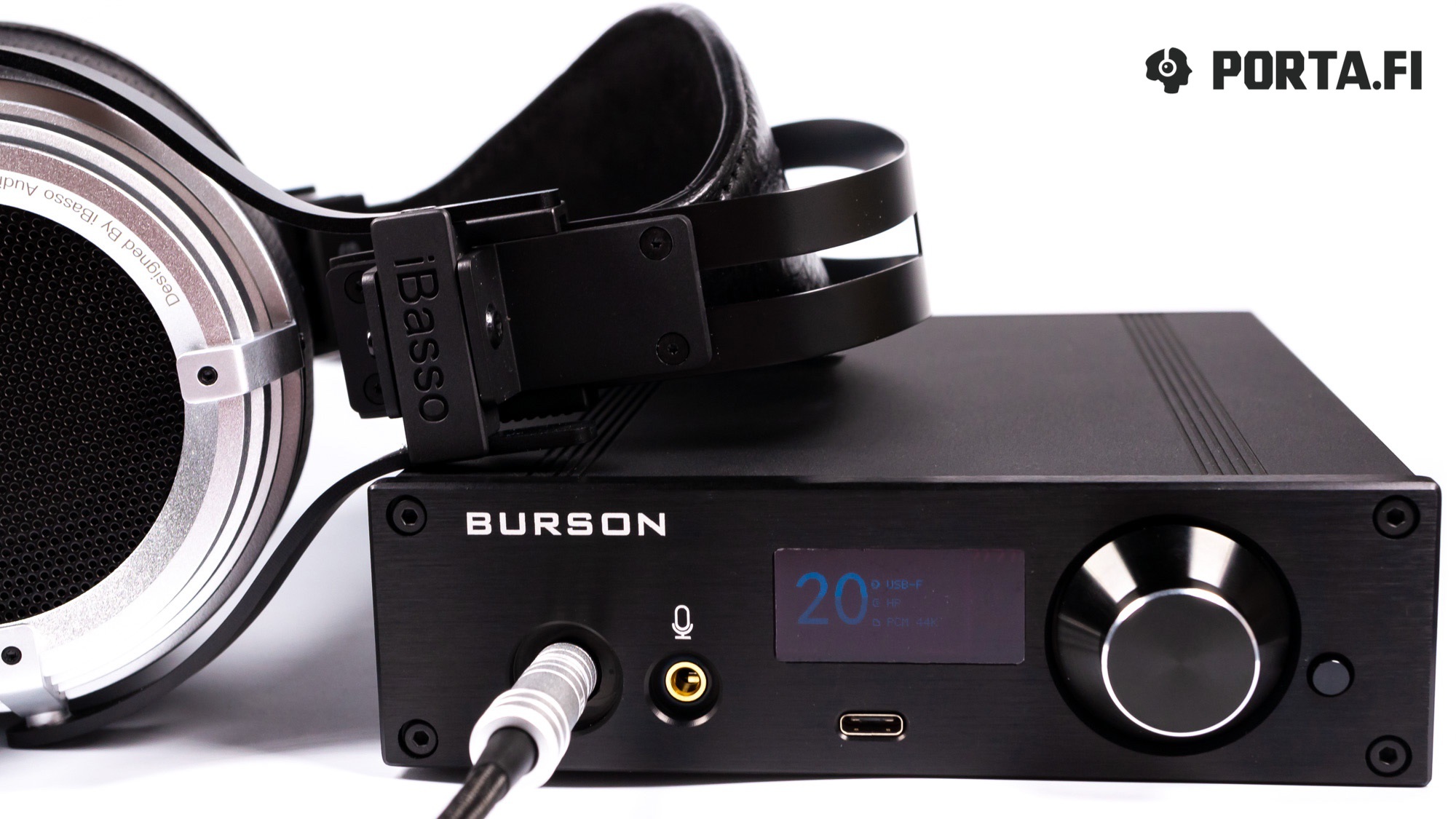Seems not difficult to create a regular desktop DAC/amp. Take correct body frame, put everything inside and that’s it. But Burson has proven that there is room for innovations with their new PlayMate DAC
Couple of ideas have been implemented in previous model under the name Play, but since I don’t have it, I will describe the new one. This DAC can be used as a desktop device, but also to put it into computer 5″ socket, changing it to an audiophile machine. There are all needed switches and adapters to fulfill this task. Also the developers have added ability to connect microphone on front for streamers and gamers and have provided device with additional USB-C socket that simplifies connection of smartphone (it’s really handy).
The second PlayMate peculiarity is the ability to upgrade it with the help of OPAs. Burson is famous for their hybrid and discrete OPAs and they even offer a version with them included for additional cost. The basic variant uses NE5532 but there is much room for improvement.
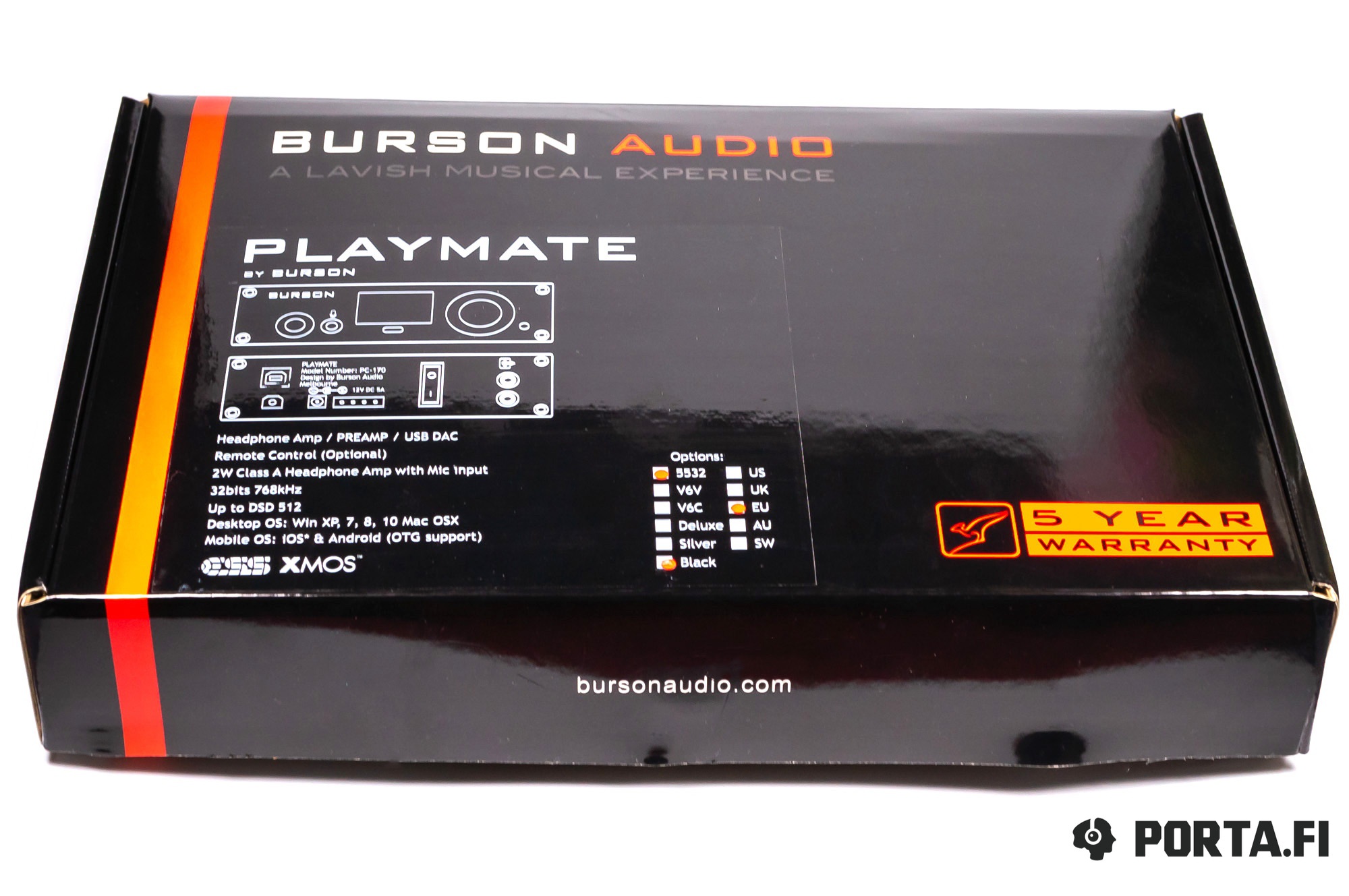
The third welcome plus is the ability to remotely operate the device, but there is no such thing in basic version and you will have to buy it separately or to buy upgraded version.
DAC is modern — ESS9038, and it is used in combination with all latest and greatest components and know-how that the company has been developing for years. The price tag remains moderate — the most affordable version costs 400 USD, while V6 Vivid variant costs 600 USD.
Specifications
- DAC: ESS9038
- OPA: NE5532 (in basic version)
- USB: XMOS
- Frequency range: 0 Hz – 35 kHz (±1 dB)
- Output impedance: <2Ω
- Output power: 2 Wt @ 32Ω
- THD + noise: 0.0018%
- Channel separation: >121 dB
- Maximal resolution: PCM up to 768 kHz/32 bit, DSD up to DSD512
- Inputs: USB-B, USB-C, microphone 3.5 mm, optical S/PDIF
- Outputs: 6.3 mm headphone, 2 × RCA line out
- Power: 12V, 1А
- Dimensions: 210 mm × 145 mm × 45 mm
- Weight: ~ 2 kg.
Packaging and accessories
The box is thick and has many layers. First of all you will have to remove transportation layer made of recycled cardboard. Inside waits the main box with glossy covering and scarce printing. Inside of main box there is DAC and two extra boxes with accessories, including:
- power adapter and cable suitable for your region
- Regular USB cable for USB-A connection
- USB cable to connect to computer motherboard
- twin RCA lineout cable
- panel with through RCA connectors for the back of PC
- hex key to disassemble the body and additional bridges
- remote (if it is included into your version)
As you can see, the accessories range is good.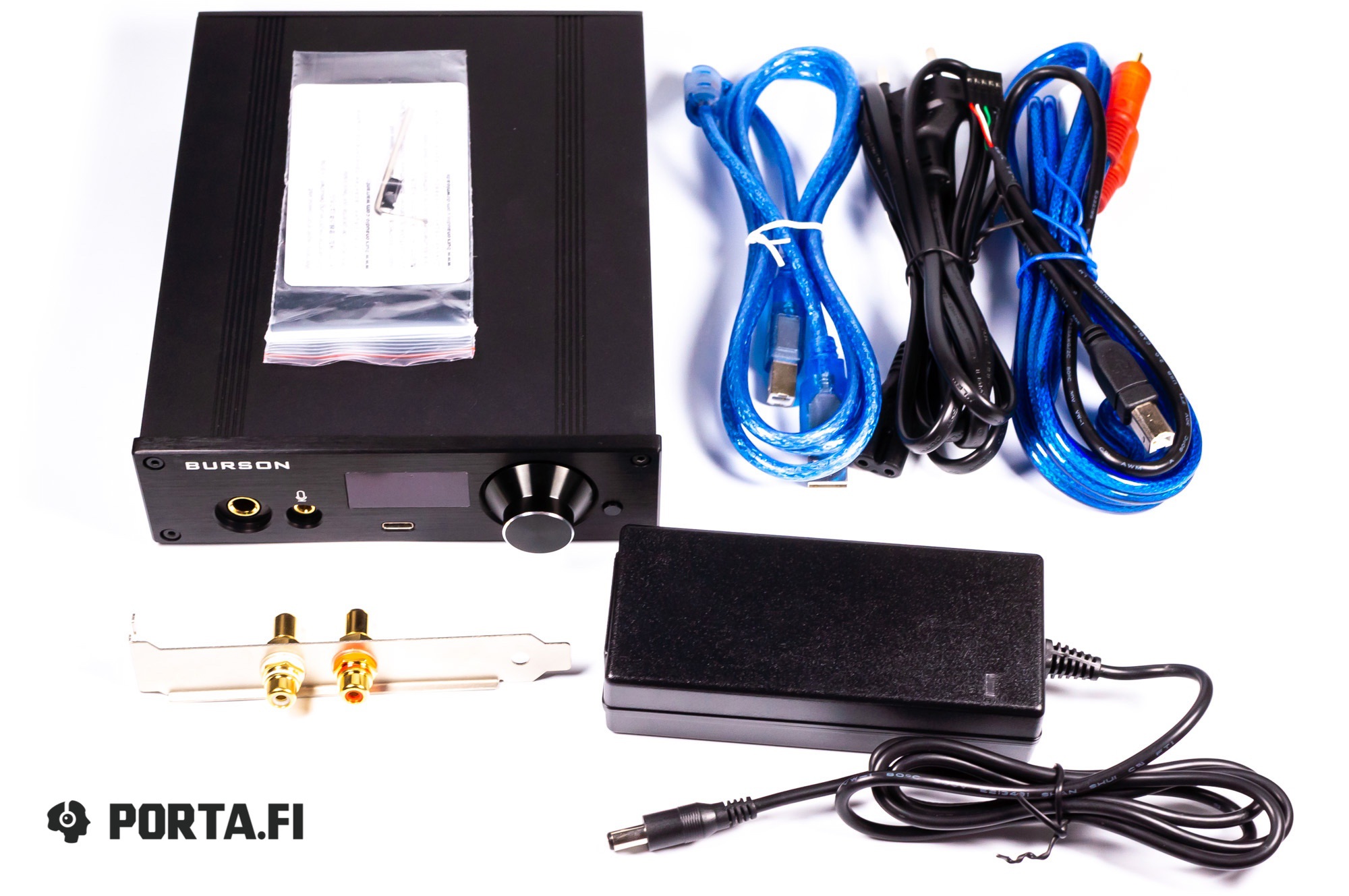
Design and controls
PlayMate is made strikingly simple — of matte aluminum body that looks neat. It is compact and is comparable to usual CD-drive in terms of dimensions. It can be placed into 5″ slot of the modern PC, since it has places for screws on body. In case you want to do it, you will need to use Molex-connector on the back for power and the cable that connects USB-B on the back to the contacts on the motherboard. There is also a possibility for line out on the back. As you see, the developers have paid much attention to such peculiarities and I sometimes think about assembling a musical barebone PC, just to place PlayMate into it.
Of course it can also be conveniently used as a desktop device. In this case external power supply is used and Burson connects to source with a regular chord.
All operational elements are gathered on front and back.
On front panel you will find:
- 6.3 mm headphone output
- 3.5 mm microphone input
- USB-C socket for smartphones or other sources
- simple monochrome screen that shows signal parameters and menu
- volume control wheel that is also used as a button for presses for menu navigation. The encoder is good, clicks are registered well
- dedicated menu button
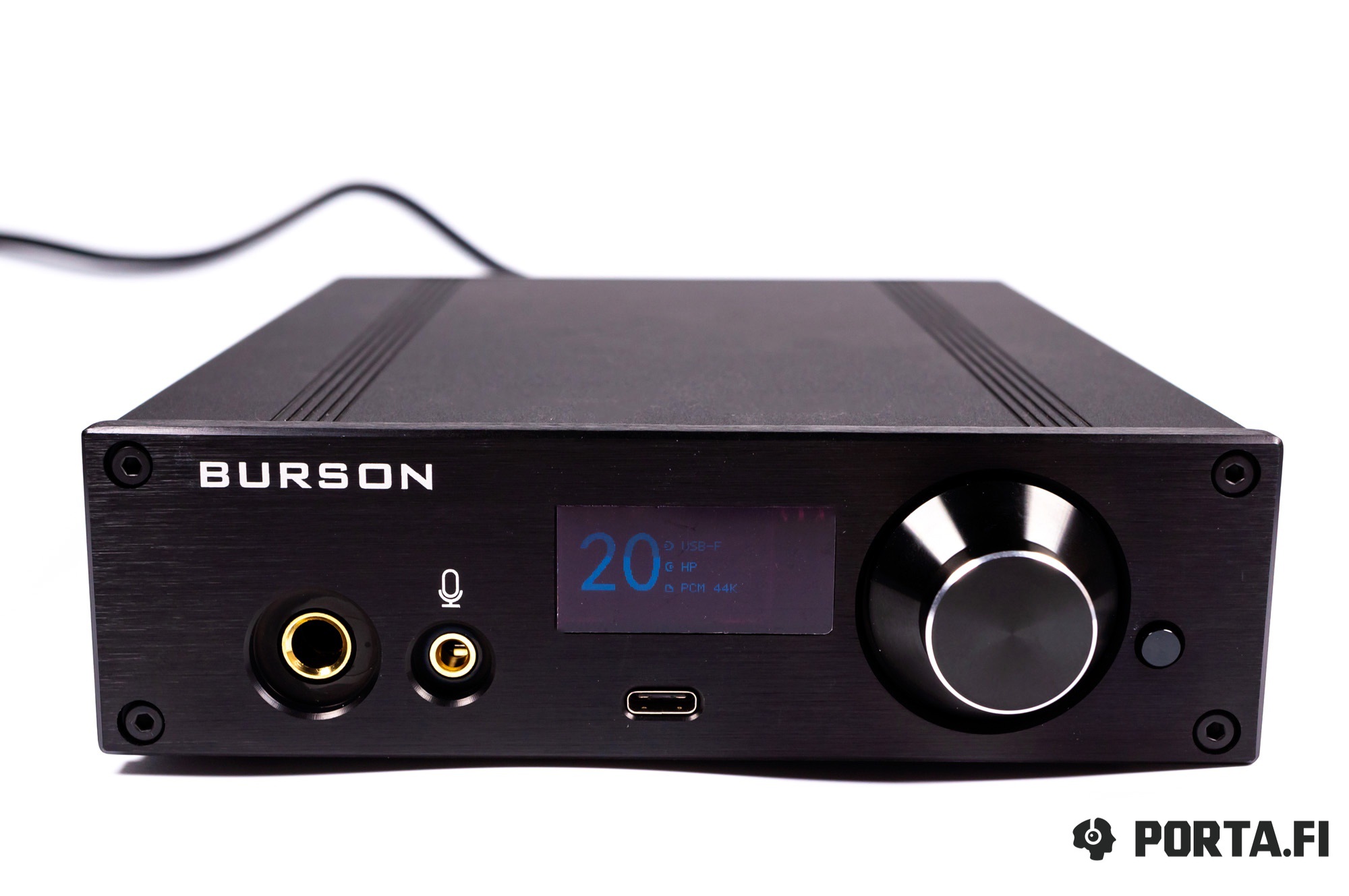
In menu you can change gain, digital filter, emphasis (smoothed highs) and some other settings. UX is intuitive and simple.
On the back you get:
- power (usual and Molex connector)
- lineout in the form of RCA pair
- USB input
- optical S/PDIF input
- power switch
As you can see, the developers have worked much on usability and have tried to create device with maximum capabilities. Build quality is on par with the price — everything looks and feels good.
Sound
I have used the following headphones for listening purposes: iBasso IT04, Meze Empyrean, Audio Zenith PMx2, Noble Audio Khan, Campfire Audio Andromeda и Solaris, Unique Melody Mason V3, HUM Pristine и другие.
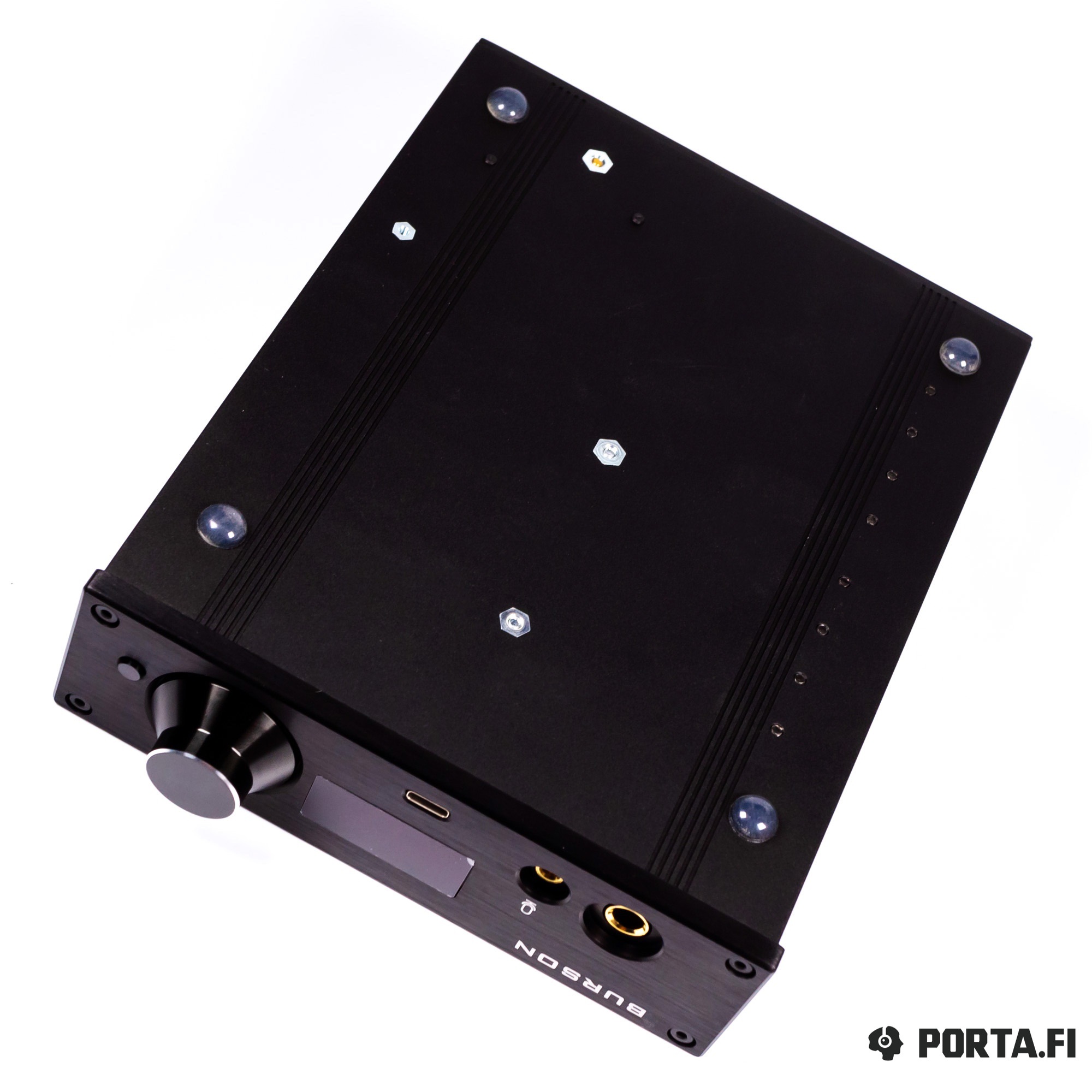
Overall presentation is neutral with correct balance of weight that prevents PlayMate from sounding dry.
Bass is very tight, thick, has good slam and speed. It is well controlled over all frequency range and has good quality textures. Attacks and decays are somewhat accelerated and it suits the overall presentation well. There is no artificial accent on bass.
The mids are detailed, neutral and uncolored. The presentation is well balanced and there is no accent on micro details. The weight is exactly as in the recording, PlayMate doesn’t add anything. Emotions are not accentuated artificially but they are there if they are present in the recording. Of course this makes the device sensitive to material quality. The soundstage is average in width and slightly less in depth, but there is good 3D-effect and layering.
The highs have good resolution, control and length. They sound natural, are saturated enough and sound lively. Because of overall presentation the attack and decays are accelerated as well and it sometimes results in more harsh sound than there is in recording. It can be easily compensated by the emphasis filter or suitable headphones, but it must be taken into account by the treble sensitive people.
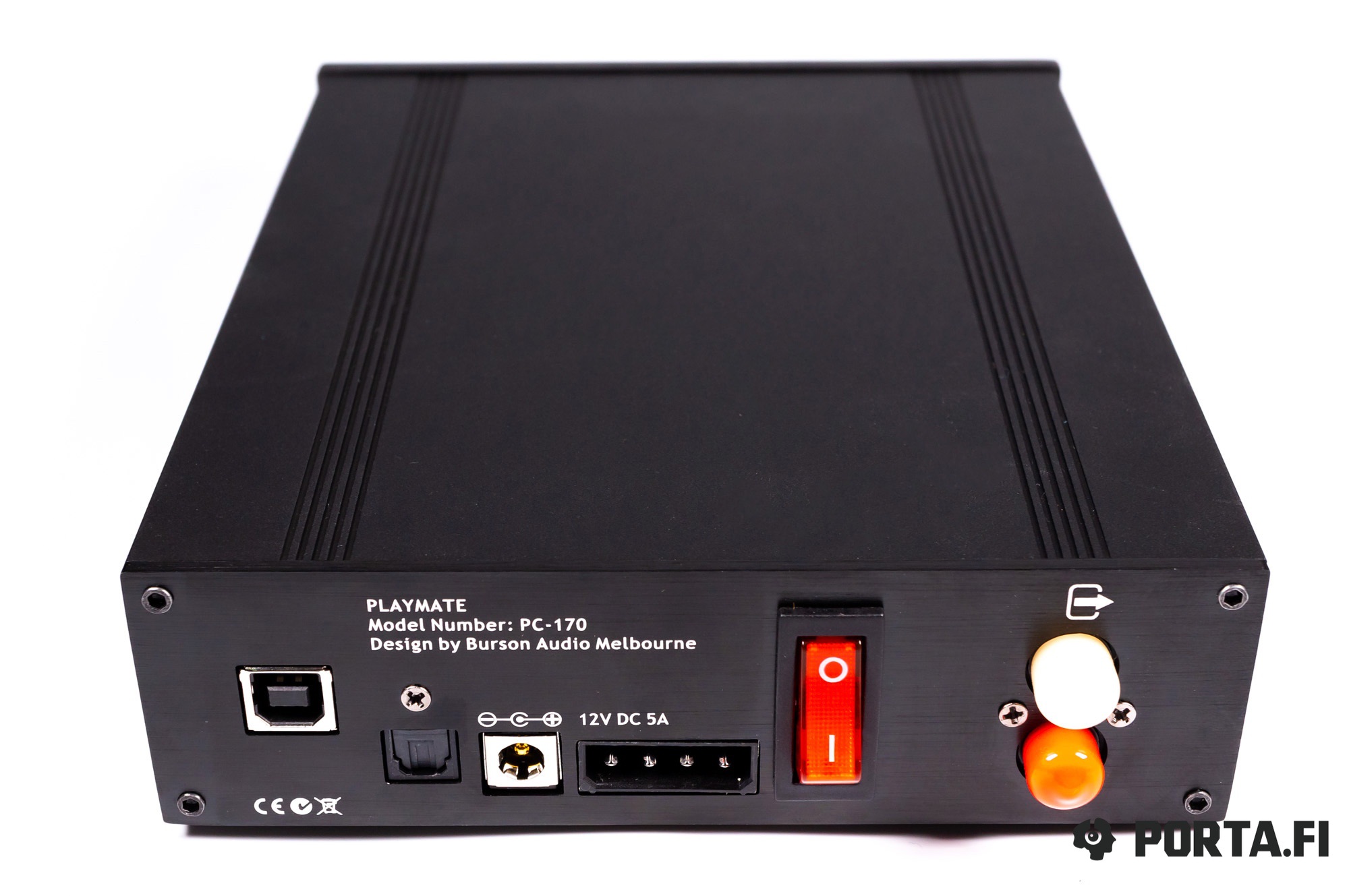
Comparisons
Shortly about selected comparisons.
Audinst HUD-DX1 Even more neutral and monitor model that has more micro details. More suitable for analytical listening and to listen to high quality media lirary.
Audio-Gd R2R-11 This one is quite opposite to PlayMate, is more warm with huge macro details accent and weight and less resolution. The highs are more comfortable but are more smooth and condensed in terms of quantity and length.
Discrete OPA V6 Vivid
Almost everyone knows Burson as the manufacturer of discrete and hybrid V5, V5i and V6 OPAs that allow to enhance sound quality of many devices, from amps to CD-players, greatly. Of course they provide the ability to upgrade their own device. Potential buyers can instantly buy the upgraded version or to order OPA separately and to install it yourself, given that it’s not hard at all. Playmate will need two double modules.
Of course you can upgrade products of other companies, look at the compatibility table on Burson website and we go back to PlayMate.
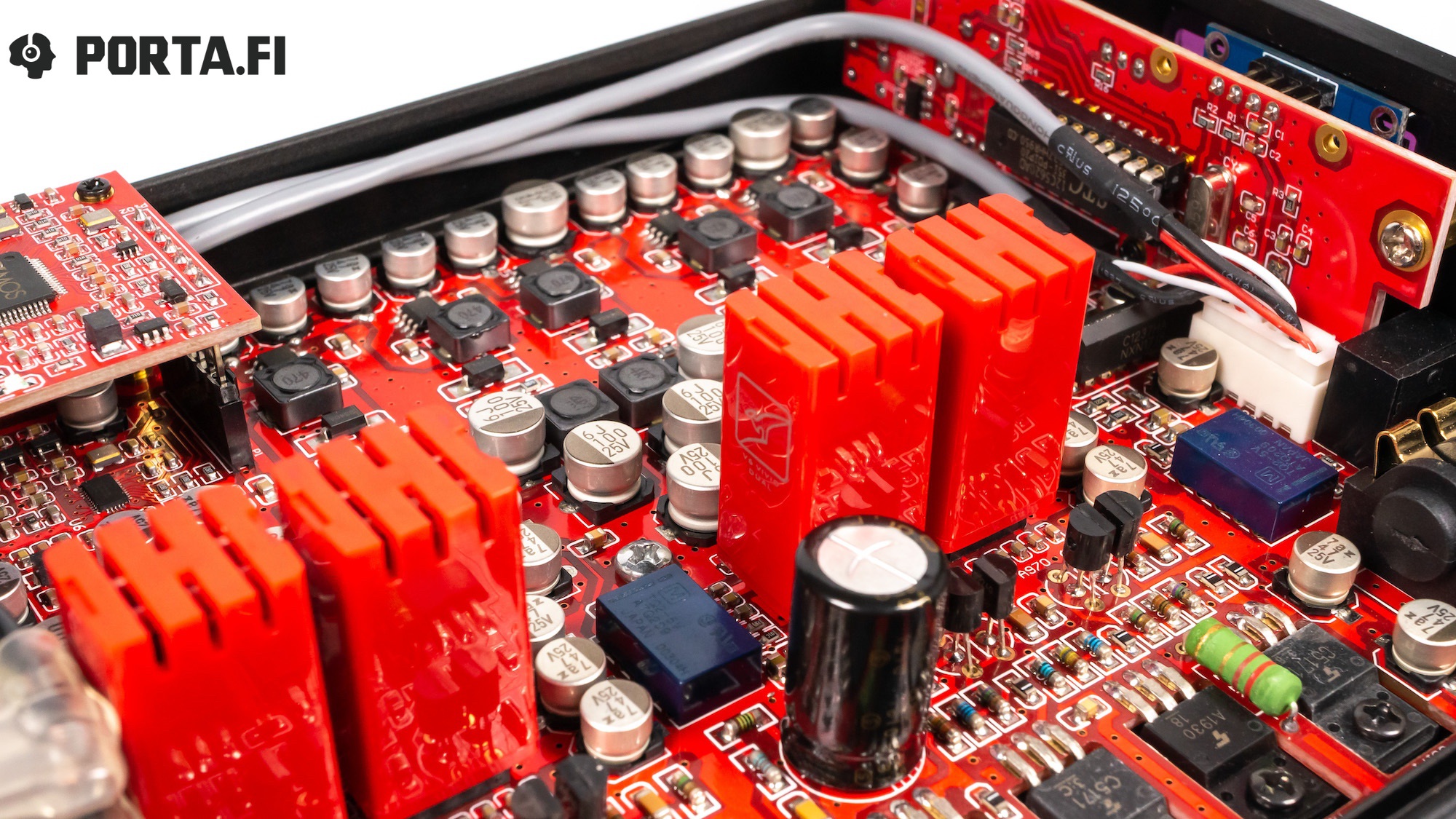
In order to install the OPA you will need to remove two upper screws in the front and back side of the body and to remove the top. After that, just remove stock OPAs and install V6 following needed polarity. I recommend to have enough light and to use a special tool for chip removal and installation, since you might risk to damage the chip legs. Overall process takes up to 5 minutes and shouldn’t cause any trouble.
The upgrade in sound is noticeable but it’s not extremely different, however it is a definite step up. I have used V6 Vivid version and will describe the differences.
This version of discrete OPA adds saturation and reminds of some plugins in audio editor, but here it sounds natural and “analogue”.
Bass goes deeper, more massive and has more roar. It is more springy and dynamic and has better involvement. It is less dry and has less micro details in comparison to the stock variant and this makes is sound more natural. Mids get more emotions, especially vocals. Voice goes slightly forward and this brings more depth to soundstage, instruments get additional weight. Highs become more natural with more realistic attacks and decays, while overtone saturation and layering are better as well.
Compatibility
PlayMate is a powerful gadget so you shouldn’t get any problems with driving most of headphones — there are not so many headphones that require more than 2 watts over 32 Ohms. Flexible gain system allows to use Burson with IEMs and you will get audible hiss only with the most sensitive models.
The device is universal in terms of style, it gets 8 out of 10 for recording quality sensitivity in stock variant and 7 out of 10 in upgraded V6 Vivid variant. Despite the fact that discrete OPAs do not significantly decrease resolution, they diminish sensitivity to mastering and mixing quality.
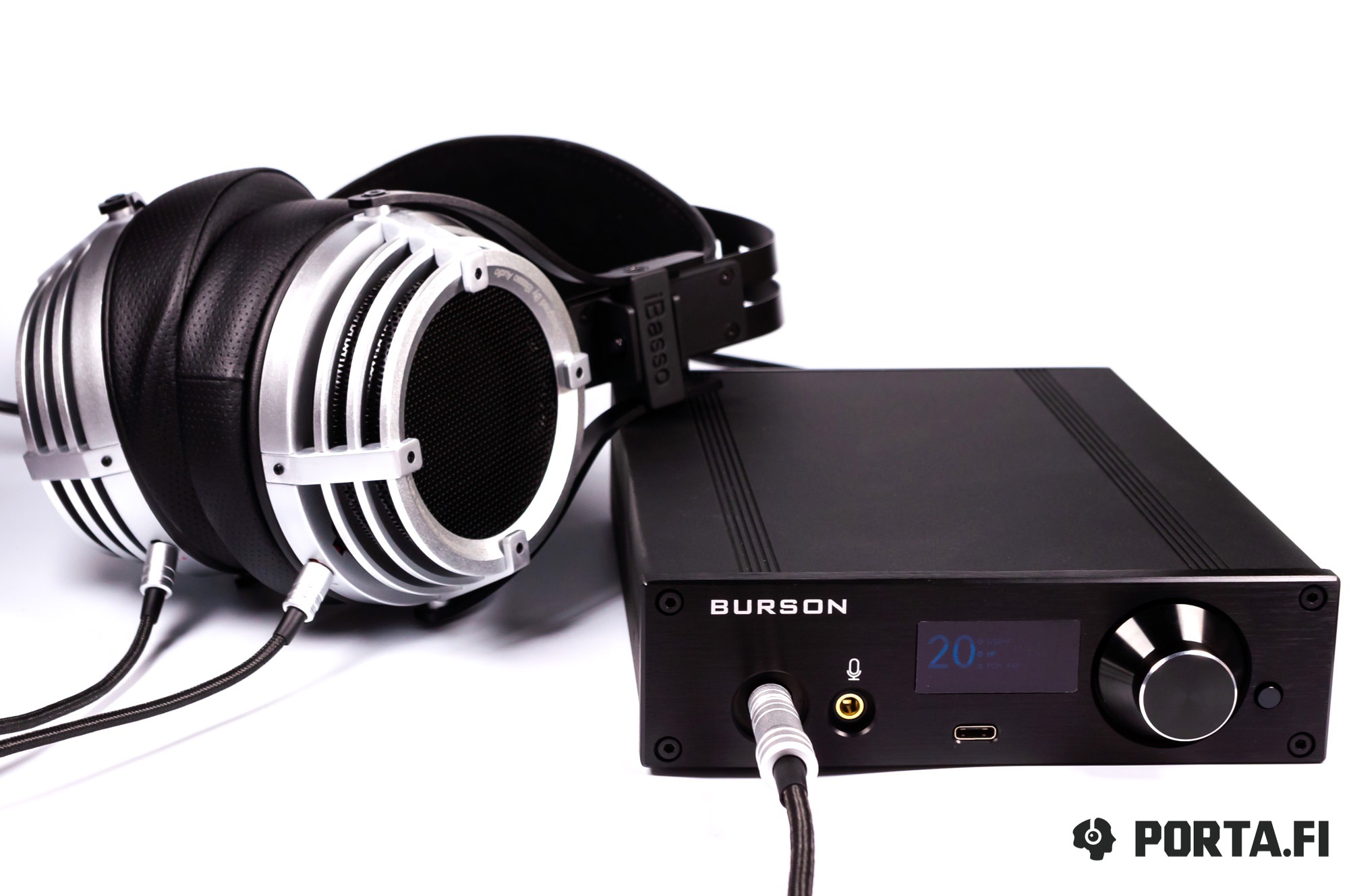
Example tracks
Allan Clarke — The Door is Slowly Closing Of course Allan is more famous in The Hollies band, but his solo works are worthwhile as well. The new album has marked 77-th birthday. Despite his age, Clarke has managed to record an interesting material and it is proved by Burson: lively guitars (listen to the very beginning), powerful rhythm section and emotional vocals.
Roberta Cleopatra Flack — Angelitos Negros The debut album of legendary American soul singer has shown that she’s got much potential and can bring the genre to a new level. In fact, she has been one of the drivers that has moved soul to mainstream. This classical composition sounds pure and is played by PlayMate well, especially by the upgraded version that adds even more emotions to the voice.
Melody Gardot — Over the Rainbow (Live) Another female vocal example. I don’t think I have to say much about this singer, let’s just concentrate on this track, since it is rather complex, but not for Playmate. The live concert with good recording, shouts of spectators, atmospheric scene and almost ideal voice control — everything is shown well by Playmate and dives us deep into this track. And there is pure magic after 2:00…
Conclusions
A rare case when developers have managed to create not only quality sound for affordable price, but also to fulfill non-usual usage scenarios that will be welcome by many users.
Translated by: Vadim Kolchev

